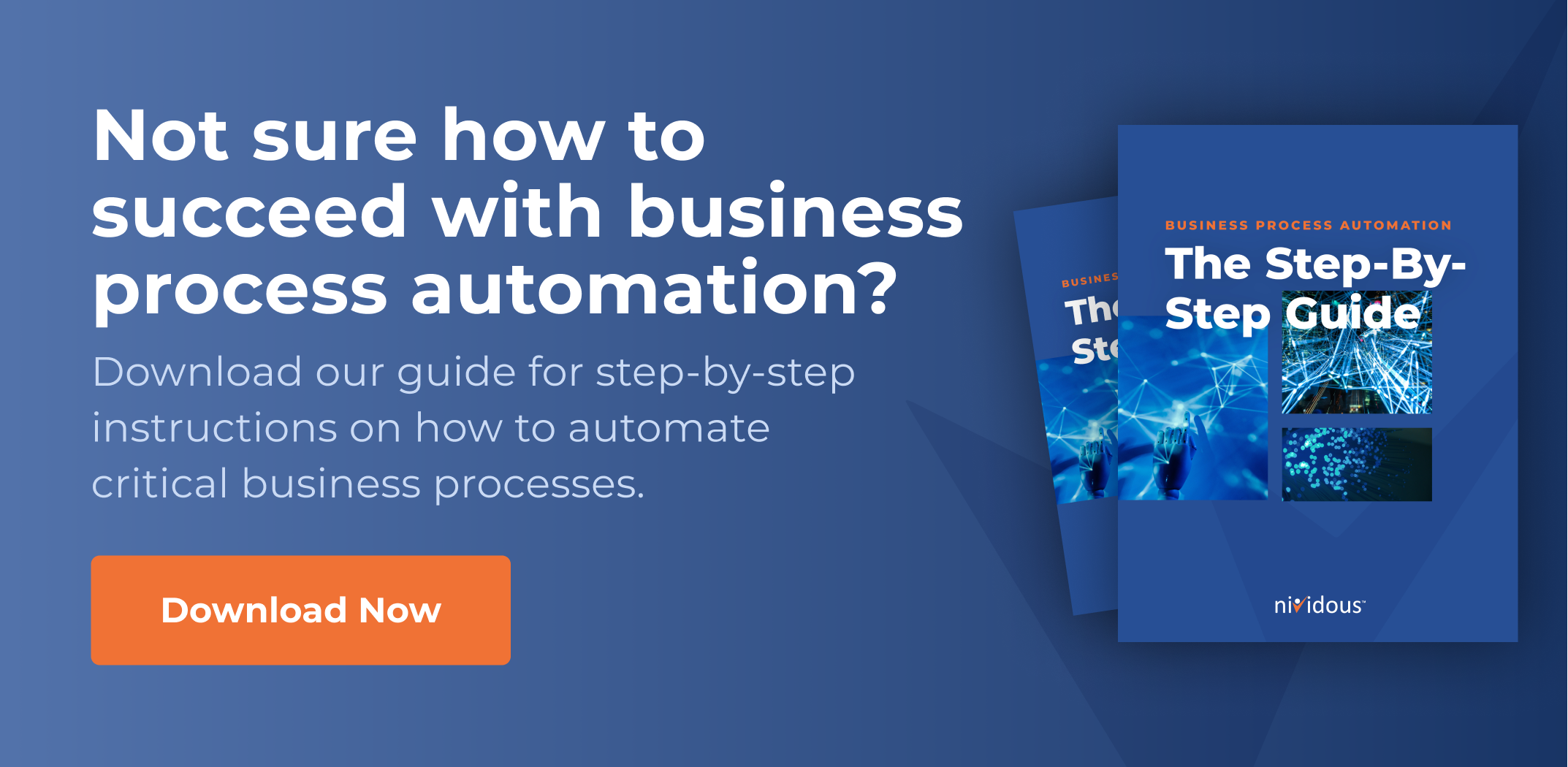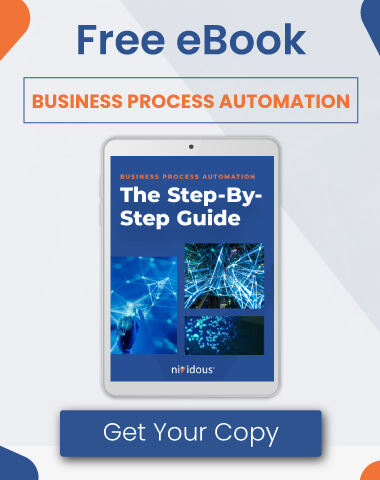Sometimes, things at work just aren’t working. Projects fall behind schedule, invoices don’t get paid, error rates spike. The smart business move is to fix these things, but you can’t fix what you don’t understand.
Enter Business Process Analysis (BPA), the science of documenting how work gets done—and the way work gets done is through business processes. So in our introduction to BPA, let’s start with the concept of the business process.
Understanding Business Process Analysis
A business process is a functional operation within your business. For example, you have vendors; those vendors must get paid. What are all the steps—from receiving an invoice to documenting the payment in your accounting software—that meet the goal? That’s invoice processing, one example of an end-to-end business process.
All business processes contain at least four elements:
- The goal: What are you trying to accomplish?
- The steps: What has to happen, in what order, to meet the goal?
- The tools: What are the systems you use to conduct these steps—enterprise software platforms, cloud services, website portals, paper documents, etc.?
- The people: Who on your team is responsible for each step? Who are all the stakeholders in the process, both within and outside of your organization?
Business process analysis is a structured examination that provides clear and thorough answers for all these questions.
Most companies use BPA as a first step in a broader Business Process Optimization (BPO) initiative; once you uncover the bottlenecks, you can take steps to remove them. But BPA isn’t just helpful when things go wrong. It can also reveal processes that function well, which you can then replicate across other business processes.
Struggling to conduct a meaningful business process analysis?
Nividous offers a team of expert business analysts to help you uncover bottlenecks and more. Reach out to discuss BPA services from Nividous.
3 Signs You Should Conduct A Business Process Analysis
How do you know when you need a business process analysis? If you encounter any of these conditions, it could be time to conduct a thorough BPA:
- You’re struggling to meet your side of a Service Level Agreement (SLA). Falling behind schedule can violate a business contract. Maybe you wrote the contract assuming you could turn around 10 invoices per hour, only to find that overly ambitious. To meet your SLA, you end up pulling staff off more valuable work every time an invoice arrives. Business process analysis can help you find a better way.
- You fall out of compliance with industry regulations. For heavily regulated industries, compliance isn’t just a question of “doing things right.” It’s also an exercise in documentation and reporting. If error rates are leading to warnings, fines, or worse, you have flaws in your compliance processes—flaws that BPA will uncover.
- Employees feel overwhelmed. It’s the oldest story in business: An employee volunteers to help out on some dreary (but necessary) spreadsheet wrangling. Maybe they process a quick invoice one day. Fast forward a month or two and they’ve become the go-to resource for handling invoices. This distracts from their core duties. They get burned out. If this sounds familiar, BPA can help find a more sustainable path forward.
These are just three examples of an infinite number of scenarios. But once you determine that BPA could be helpful, the question becomes how to actually conduct the analysis.
Business Process Analysis: Methods For Success
There’s no one-size-fits-all workflow for BPA, which must be tailored to the particular process you’re analyzing. That said, most BPA projects will look something like this:
1. Identify the process to analyze.
To get the most benefit from an initial BPA exercise (and the optimizations it can uncover), it is wise to choose a process with a high degree of business value and a low degree of business complexity. The less complex the process, the easier it will be to document. Given that the very people who complete that task will be involved in the analysis, it’s wise to begin your first BPA with something that will make a real difference—without overtaxing the team.
2. Identify the stakeholders.
Business process analysis may require broad participation—not just from the owners of the process but also the staff, clients, and outside partners who have a hand in getting things done. Put together a list of stakeholders and invite them to commit fully to your BPA project for a better chance at success.
3. Determine the inputs and outputs at each stage of the process.
Every step in a process has both inputs and outputs: Data and/or materials enter one way and leave another. To take our invoice processing example, inputs are invoices—but those may come in by email, by Electronic Data Interchange (EDI), as PDFs, as spreadsheets, and more, each a different input stream.
The output for a process is usually more uniform: In terms of invoice processing, the output is a paid invoice along with documentation in your ERP or accounting software. You need to understand these inputs and outputs at every stage to get a clear picture of the end-to-end process.
4. Observe and record the process.
Observation and documentation generate the data you need for analysis. Record quantifiable metrics like time spent on each action and input costs, and note every instance of work hand-offs from one participant to another.
Start by documenting what analysts call the “happy path,” a picture of the process when everything goes as planned. But also study “exception paths,” the process as altered by disruptions. Focus on the exceptions that are both most likely and most disruptive; those are the ones you want to observe and chronicle.
Ask the question “What happens when?” as opposed to trying to put the process into clear steps right out of the gate—and record only real-world behavior, not the standard operating procedure. At all times, remain objective, noting only the facts.
5. Interview process stakeholders.
Ask process participants and owners where they identify bottlenecks. Don’t take comments as authoritative truth; you’ll verify what participants say later. But stakeholder opinions are a powerful data source in your analysis.
6. Create a workflow map for the process.
Once you have your data, it’s time to get it all down on paper. Create a process map that identifies:
- Steps
- Inputs and outputs of those steps
- Participants who complete these steps
- Common exception scenarios
- All other applicable details about the process
This is the documentation you’ll work with during the actual analysis.

An extremely simple process map.
7. Analyze the process.
With data prepared, you can proceed to the analysis. Keep your analysis quantifiable; you want to boil workflows down into numbers. Study the metrics, finding answers to questions like:
- Are there steps causing delays or bottlenecks?
- Can any steps be eliminated or folded into other steps?
- Do stakeholders have the resources they need to complete their end of the process?
- Are errors occurring consistently at one step or another?
- What are the common stakeholder complaints?
Now that you have a general picture of BPA from start to finish, let’s take a look at the tools you’ll need to get the job done.
2 Necessary Types Of Business Process Automation Tools
As in any project, you need the right tools to conduct BPA successfully. These tools fall into two general categories:
1. Documentation tools for BPA.
These tools help you collect data on the process. They could be as simple as a team of analysts with clipboards. More likely, you’ll start with recording devices. On-site, you might use videorecording. Off-site, you might do the same; Zoom is often extremely helpful for recording participant screens as they work.
You might even point a video camera at the keyboard, tracking work at the keystroke level. Or you could use process recorders, software that tracks mouse clicks and keystrokes within the computer system. Process recorders do tend to catch a lot of noise, however, and they often miss the human element—things as simple as an absence or unscheduled break.
2. Process mapping tools.
The main output of an initial BPA project is the process map, a document that describes process workflow in detail. Try PowerPoint to create a clear process map incorporating both graphics and textual descriptions of workflow. Or use a dedicated process mapping tool; Microsoft Visio is a popular choice.
Either way, with a process map and a detailed report, you’re ready to put your analysis to work.
After BPA: What To Do With Business Process Analysis Results
As we’ve mentioned, most BPA is a precursor to process optimization. That’s where you go from “as-is” to “to-be,” designing a new process map that removes the inefficiencies you uncover during your analysis. Often, this optimization involves automation—and with a combination of Robotic Process Automation (RPA), Business Process Management (BPM), and Artificial Intelligence (AI), you can automate entire processes from beginning to end.
This is called intelligent automation, and it’s what the Nividous platform provides all in one place.
At Nividous, we start every automation project with thorough business process analysis. Then we optimize that process before automating. After all, automation creates scalability, and if you scale an inefficient process, you scale inefficiency. Our team of expert business analysts can help you conduct BPA, either as a precursor to automation or as a stand-alone service.






